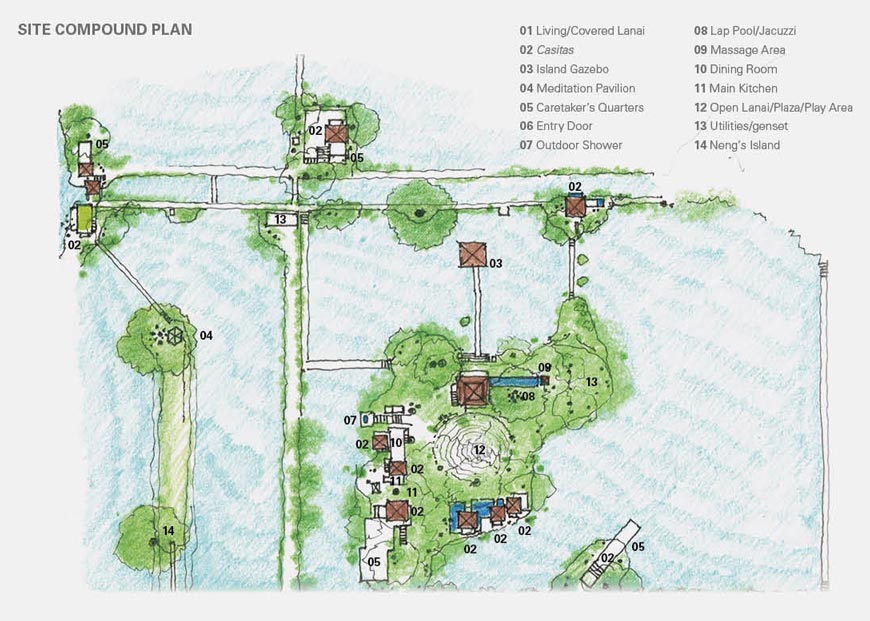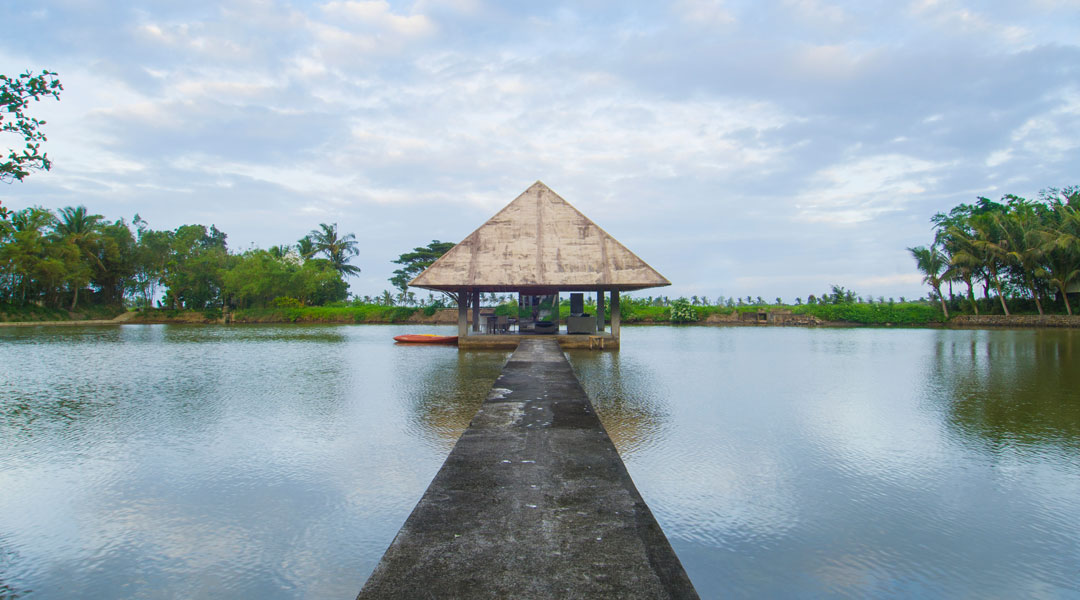
Punong: A nature-embraced family retreat by Ed Ledesma
Punong, as the Ledesmas fondly call their vacation home, is Hiligaynon for “fishpond.” The 95-hectare property is comprised mostly of these, which, along with sugar, comprise the family’s chief business ventures. Its architect, Ed Ledesma, developed the compound as a place of solace for his family, away from the busy city.
Daughter Bing Ledesma-Benin and family have called Punong home since 2007, after moving in to manage the business. The property used to be just a collection of fishponds, a place where fish farm workers conducted their operations, with serviceable nipa huts for when visitors arrived.
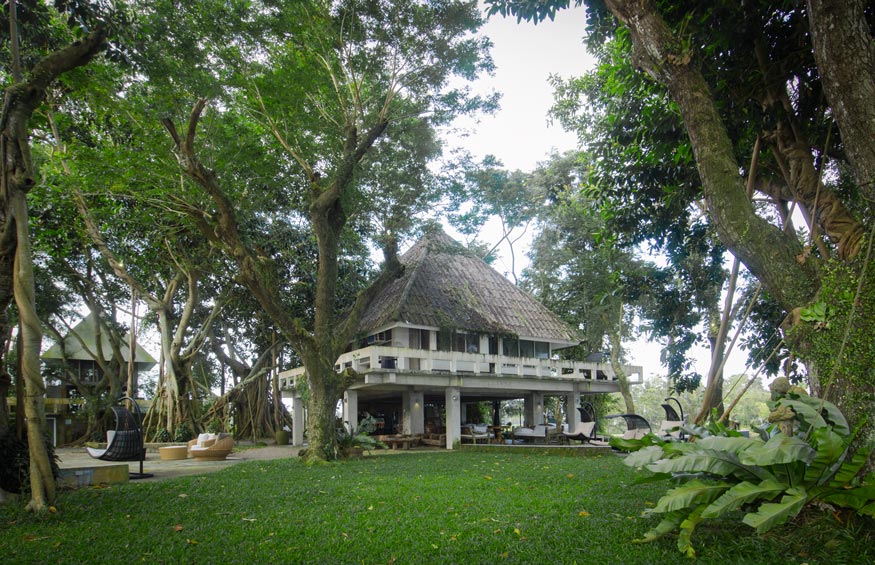
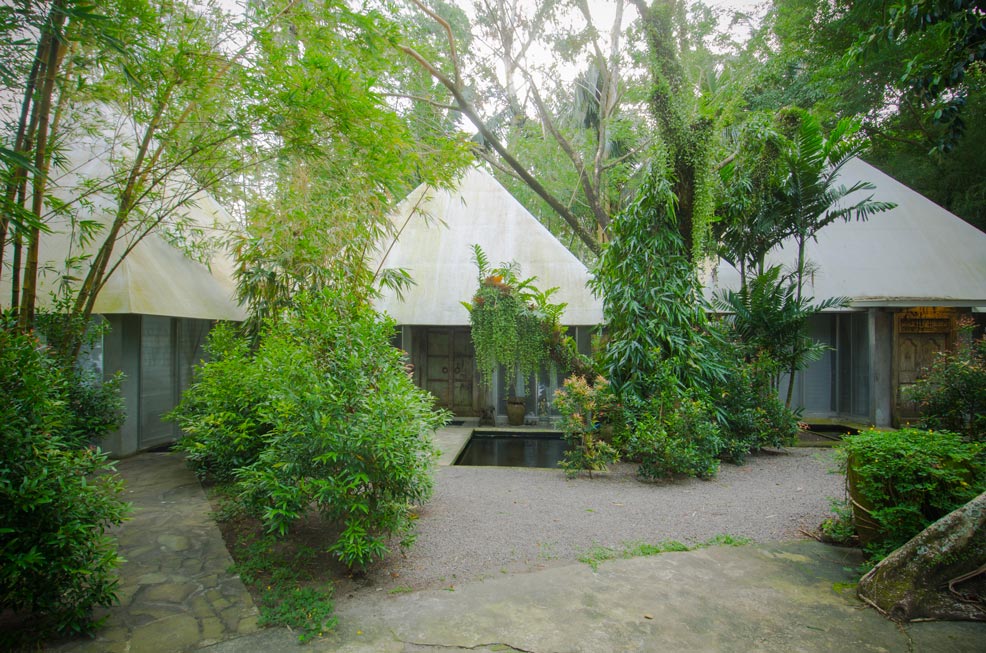
READ MORE: Leandro V. Locsin Partners’ Ed Ledesma on Protégés
Punong is a perpetual work in progress—a “family project,” Benin calls it. There was no master plan, the family didn’t sit down to discuss what they wanted; the place just grew organically to meet the growing family’s evolving needs. The compound’s charming casitas all used to be nipa huts, but when Ledesma’s wife said she was finding them difficult to maintain and that it would only get more so in the long run, Ledesma had the huts replaced with simple, box-type concrete structures.
The casitas, built years apart over time, are uncomplicated and undemanding, submissively allowing nature to creep, crawl, sprout, grow and propagate over, under, in between and around them in wild abandon—so much so that stairs, doors and walkways all but disappear into the encroaching branches, roots and vines. There are even bathroom setups—showers, toilets, bathtubs, sinks—hidden inside mossy stone walls and tangled upon knots of tree roots. Sculptures by Bacolod artists are strewn about in the grounds, in the most unexpected places. These kinds of surprises abound in Punong—they are visual chuckles, the architect giving the observer a playful wink.

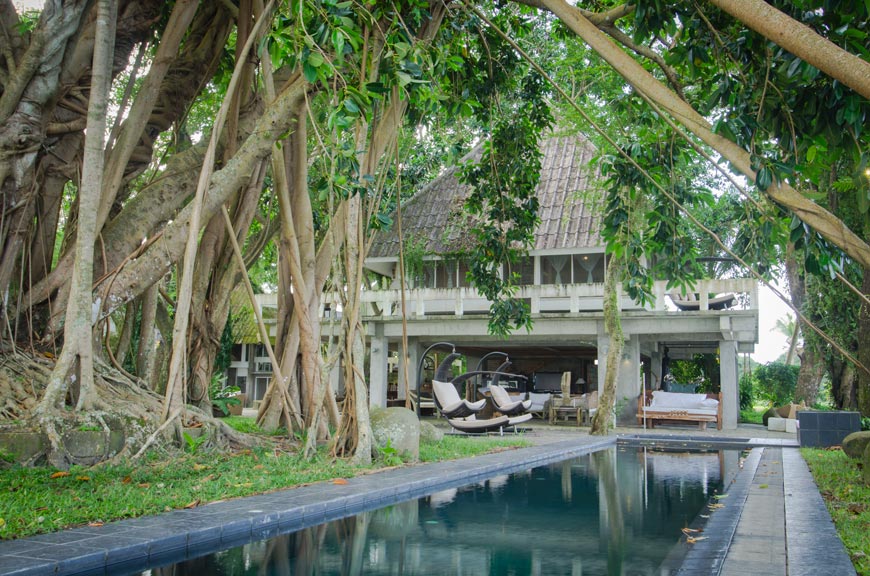
In the middle of the compound is the main house, which looks exactly like a bahay kubo rendered in concrete: the enclosed second floor, with its large pyramidal roof, is supported not by walls, but concrete pillars, and the space underneath is used as an entertainment area.
The main house and the casitas are gathered round an open courtyard with various kinds of outdoor furniture, sheltered by a canopy of rubber, narra, mahogany and acacia trees. All around the compound, glinting in the sun, are sprawling fish ponds so wide that one would think the compound is actually an island in the sea. The ponds, mirror-like and separated from each other by dykes, highlight—even double—the vastness of Punong. Bird calls persistently puncture the silence, and the place is never without a breeze. “You know, if Punong were to be advertised, its tagline would easily be: ‘You want fresh air? Go to Punong!’” Benin says.
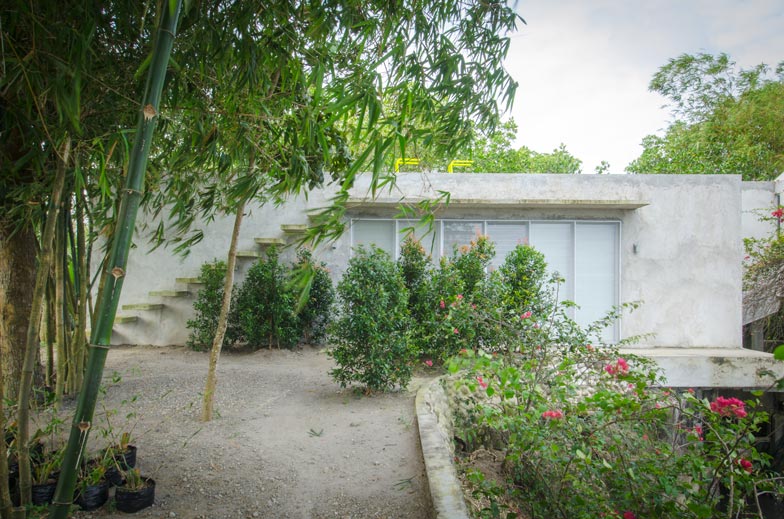

The entire place was (and is still being) developed wholly by instinct; the placement of the casitas, their respective orientations, the simple look of the living quarters—overall, the confluence of Ledesma’s built environment and the lush, serene setting—is an interesting study in architectural intuition. Luxury getaways and resorts, featuring a mishmash of architectural styles that try too hard to compete for one’s admiration and attention, are a dime a dozen, but only a handful can match the organic and effortless feel of Punong, which was never built to satisfy marketing strategies or tourist numbers, but to help shelter and rejuvenate the family that calls it home.
Curiously, punong also means to enclose and confine, and can be a synonym for “quiet,” “calm,” “tranquil.” There is a veritable hush upon entering its grounds, and lingers even after one has left; indeed, it is punong. ![]()
